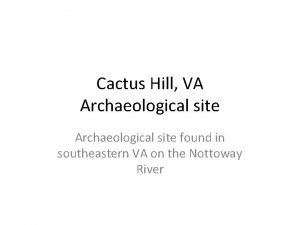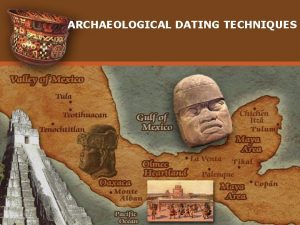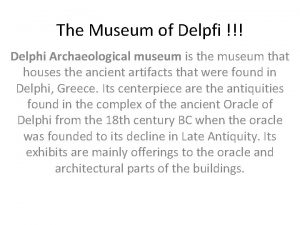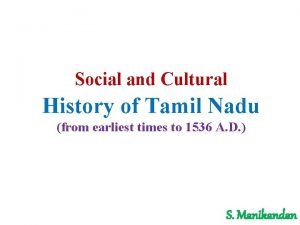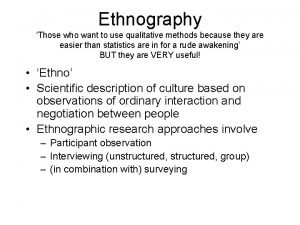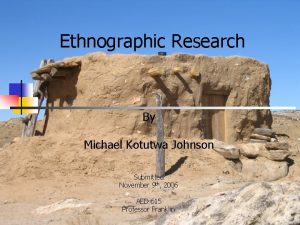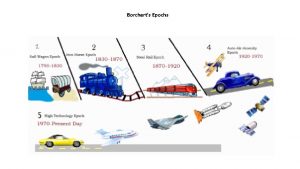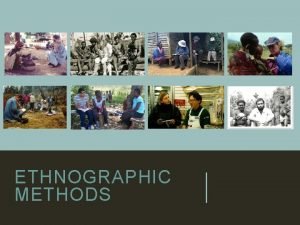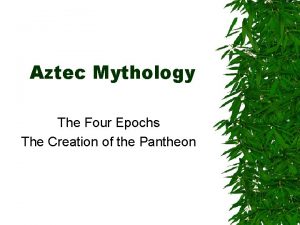Archaeological and Ethnographic materials of different epochs in





















- Slides: 21

Archaeological and Ethnographic materials of different epochs in the kura river gorge, between Mountains of Ararat and Caucasus Mountains

Noah's ark and Georgians Kartlos is the eponymous ancestor of the Georgians (Kartvelians) in Georgian mythology, more specifically of the nation of Kartli (Caucasian Iberia). Kartlos is introduced in the medieval Georgian Chronicles (Kartlis Cxovreba), presumably recorded from oral tradition by Leonti Mroveli in the 11 th century. The legend has it that he was a son of Targamos (descendant of Noah-Japheth-Gomer-Targamos-Kartlos) and, thus, brother of Haos, Movakos, Lekos, Heros, Kavkasos, and Egros from whom other Caucasian peoples took their origin. Kartlos united his people to become their chieftain and founded the city of Kartli. The sons of Kartlos are listed as: Mtskhetos, Gardabos, Kakhos, Kukhos, Gachios, Uphlos, Odzrkhos, Javakhos, the respective eponymous founders of Mtskheta, Gardabani, Kakheti, Kukheti, Gachiani, Uplistsikhe, Odzrkhe and Javakheti.

Kura river gorge is famous by its ancient sites: Ardahan, Vardzia, Bertakana, Uplistsikhe, Grakliani, Mtskheta, Tbilisi, Rustavi, Dmanisi Mingachevir and etc. People have lived on the Kura for at least 7, 000 years. The first irrigation agriculture began about 4, 500 years. Trading centers were established in time, including one at Mingachevir in Azerbaijan and another at Mtskheta in Georgia. The site at Mingachevir (probably Sudagylan), first discovered in the 1940 s by archaeologist G. I. Ione, had "seven rectangular kilns … The fuel chamber was trapezoid. The inner walls and floor were covered with a special coating. These kilns were attributed to the third century B. C. The number of kilns and the quantity of raw material indicate a trade center. " The settlement was probably destroyed by a fire around A. D. 600, but its demise is uncertain. One of the most famous of the ancient settlements on the Kura is the "cave town" at Uplistsikhe, Georgia, first settled as early as 3, 500 years ago. The city, carved into a cliff on the bank of the Kura covering an area of 8 hectares, contains underground living quarters, communal chambers, places of worship, storerooms, connected by a network of passageways. It reached its peak about 1, 100 years ago as the political, religious and cultural center of the region, but in the 13 th century, it fell to Mongolian invaders.


Wooden vessel. Mount Ararat. XVI-XV cc BC.

Wooden vessel. Tusheti. on the northern slopes of the Greater Caucasus Mountains. Late Middle ages (By Morphology)

Wooden vessel. Mount Ararat. XII-XIII cc AD

For dating Wooden artefacts, found in Ararat, researchers used Radiocarbon dating is a method for determining the age of an object containing organic material by using the properties of radiocarbon (14 C), a radioactive isotope of carbon.

In some circumstances researchers used Morphological method. Morphology in archaeology, the study of shapes and forms, and their grouping into period styles remains a crucial tool, despite modern techniques like radiocarbon dating.

Gori Wineskin. XVIII-XIX cc

Wineskin was an irrevocable part of the life of locals in the huge territory between the mountains of Ararat and Caucasus. It was also used as a musical instrument

Scientific-research activities that were carried out through the Ararat and Caucasus mountains (Tusheti) revealed some similarities between the Ethnographic cultures in these regions. It is obvious that in the old days different ethnic groups who lived here had the similar agricultural economy: wooden vessels, ceramics, leather and wool productions and etc. The above mentioned fact indicates that there were some cultural and economic links between the nations lived here from the Chalcolithic period

Stone ram. Iğdır Province. Near the Ahora village, North part of Mount Ararat

Stone ram. Dmanisi. Georgia Pof. merab Dzneladze

Stone ram. Near the Borjomi. Georgia

kult of ram was characteristic for the people of Caucasian and Ararat region during the millennia (especially from the Late Bronze Age). kult of ram indicates the high level of sheepbreeding and cattle-breeding in General in this area. In Greek mythology, the Golden Fleece is the fleece of the gold-hair winged ram, which was held in Colchis. The fleece is a symbol of authority and kingship. The story is of great antiquity and was current in the time of Homer. It survives in various forms, among which the details vary.

Horse (Stone). Iğdır Province. Near the Ahora village, North part of Mount Ararat

Horse (Stone). Dmanisi. Georgia

Horse (Stone). Dmanisi. Georgia Doctor Irakli Anchabadze

Stone horse sculptures, which are dated by the high and Late Medieval Ages (10 th 18 th cc), we can mainly see in the area of south Georgia and Ararat plain

we thank "Mount Ararat Discovery Foundation" for support our scientific researches in the Kura river valley and Ararat region
 Different materials have different
Different materials have different Cactus hill virginia artifacts
Cactus hill virginia artifacts Potassium argon dating method
Potassium argon dating method Archaeological site of mycenae
Archaeological site of mycenae An archaeological dig turns up large numbers
An archaeological dig turns up large numbers Archaeological resources protection act
Archaeological resources protection act Delpfi
Delpfi Eastern ghats
Eastern ghats Ethnographic interview questions
Ethnographic interview questions Ethnography template
Ethnography template Analyzing ethnographic data
Analyzing ethnographic data Advantage and disadvantage of ethnography
Advantage and disadvantage of ethnography Ethnographic analogy
Ethnographic analogy Rapid ethnographic assessment
Rapid ethnographic assessment Purpose statement in research example
Purpose statement in research example Ethnographic field studies
Ethnographic field studies Ethnographic research
Ethnographic research Michael kotutwa johnson
Michael kotutwa johnson Gay nnn
Gay nnn Borchert's model
Borchert's model Epochs in tertiary period
Epochs in tertiary period Borchert's epochs model
Borchert's epochs model

